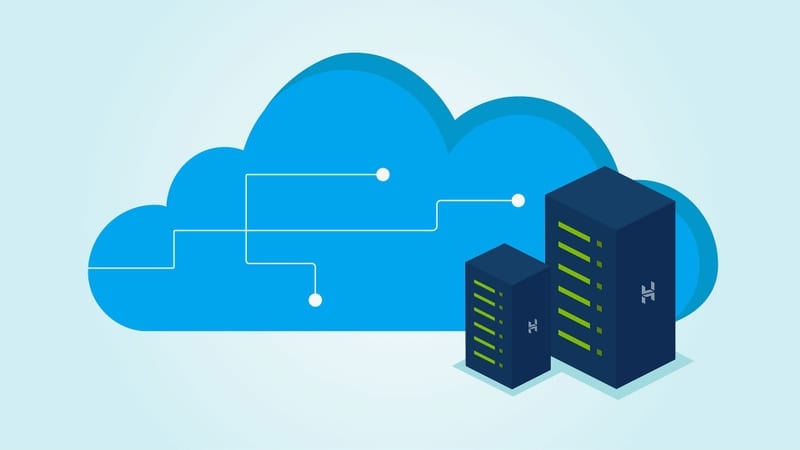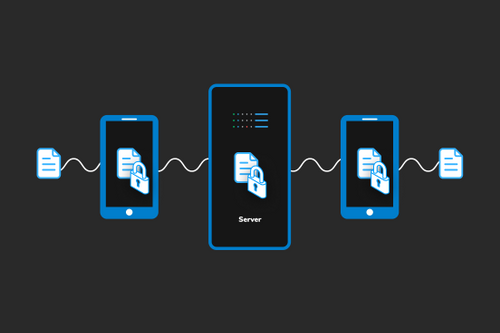Try an experiment. Ask ten friends if they use the cloud. Approximately two out of ten will answer positively. Then ask them if they use Google Drive, YouTube, or Facebook: almost all of them will say yes. The solution to the mystery is simple: we all use the cloud!
Every time you post something on Instagram, watch a TV series on Netflix or store important files in a cloud like Google Drive, you’re using small pieces of a data center’s capacity. And with every like we leave, with every TV series we watch, the amount of data we generate is growing exponentially. Saving 100 gigabytes of data in the cloud per year creates a carbon footprint of about 0.2 tons of CO2, based on usual U.S. electric consumption. The reason for these emissions is because data is stored in large data centers.
So, no. Cloud storage is not literally in the clouds.
Certainly, cloud storage has simplified our lives, allowing people to sync and share files instantly from anywhere at any time. But it also has its drawbacks. So, what exactly is behind this amazing service?
On this page, you’ll find:
- What 'the cloud' REALLY is and how it works.
- Some statistics that will make it crystal clear to you how data centers are definitely not a sustainable solution.
- Words and facts from the 'big three' of cloud storage.
- The existence of the distributed cloud: a disruptive alternative that brings a spark to this harsh reality.
What "the cloud" REALLY means
Have you ever thought about what “the cloud” really means? Well, cloud storage has nothing to do with the white and smooth thing in the sky, nor is it something abstract floating around. Actually, cloud storage is in most cases physically somewhere - there are dozens places around the world.
So, what’s the problem with data centers? Mainly the amount of energy these types of data centers require to operate, plus the fact that their numbers are growing faster than the world's total population growth. However, cloud storage has revolutionized our lives like cars did way back when. And even if we know they pollute, we simply can’t live without them anymore. But as we’ll see at the bottom of this article, alternatives do exist.
But let’s take a step back.
What is cloud storage and how does it work?
In a nutshell, cloud storage, often referred simply as ‘the cloud’, is a service that allows you to store your data - most of the time on server farms located on the other side of the planet. They physically store the information and allow you to upload and access your content by means of a simple internet connection and without the need to have the content on your device.
Once you move your files to ‘the cloud’, they become the responsibility of a third-party provider who has the delicate task of managing and maintaining the infrastructure, ensuring you have access to your files whenever you need them.

The "infrastructure" we are referring to consists of data centers with hundreds of computers that physically store data and make it available to users over a network. These data centers are on 24/7 and collect our data every day, even data we are unaware of. For example, watching an hour of Netflix in standard definition equates to 1GB of data usage. Video streaming in 4K resolution consumes 15.98 GB of data per hour.
If these numbers seem small to you, remember that there are currently 4.66 billion active internet users worldwide, so these numbers are subject to an exponential effect.
Now that we've learned what cloud storage is and how it works, we'll guide you through the great universe of data centers to better understand the "guest house" of our data.
The cloud lives in data centers
Think of the cloud as a city with buildings that are constantly being built, but instead of people, they house our data. The more the "population" grows, the more buildings we have to build.
To continue with this metaphor, imagine that the people inside the buildings use electricity and gas to heat or cool their apartments, thus requiring and consuming energy, and contributing to the pollution of the environment.
This is exactly what happens with data centers.
As the storage of our data shifts to the online sphere, more and more servers are needed to host our files, emails, photos, and documents. This results in increased demand and consumption of energy - and space! In addition, data centers need cooling systems to keep the environment operational - in some cases, this involves a lot of water - so again, a lot of energy is required.
Estimating the world's data production: from its origins until now
At this point, you are probably wondering how much data we copy, share and create every day. Well, you better hang tight:
- 306.4 billion emails were sent and received globally in 2020.
- 500 hours of Youtube videos were uploaded every minute in 2019.
- Cisco’s Annual Internet report states that in 2023 network-connected devices will total three times the number of humans on Earth.
In the 1990s, the World Wide Web played a significant role in how we store and create data every day, with companies rushing to get their websites and migrate key business files into the cloud.
As of today, with the growth of cloud data storage, 1.8 billion people worldwide are using it for personal purposes (often combining more than one service), and many companies are also moving their business to the cloud.

The reason for this shift to off-site storage is related to the scalability and cost-effectiveness of the service, marking the turning point in the way data is collected. In fact, using cloud storage means not having to spend money on hardware and maintenance. Instead of buying equipment in-house, hardware needs are outsourced to the vendor.
In the next section, we'll dig deeper into how data centers contribute to carbon emissions, providing some illuminating statistics on the phenomenon.
Data centers contribute to global warming
To better understand “what is cloud storage and how does it work”, let’s consider cloud storage and data centers as two sides of the same coin. In fact, since the demand for cloud storage services has increased dramatically, the size and number of data centers built to house them have also grown accordingly.
There are a lot of data centers around the globe, some are small while others are incredibly big like the Range International Information Group located in China, occupying 6.3 million square feet of space - the equivalent of 100 football fields!

While online data storage has simplified our lives in multiple ways (think of the ability to have any file you need at your fingertips or the convenience of not having to store data on CDs), it's time to consider the impact on the environment. Statistics are not encouraging at all: it was reported that in 2016 all the world data centers used more than the UK’s total electricity consumption and are responsible for 1% of the total electricity consumed worldwide.
Linked to this, data centers are responsible for 3.5% of global emissions (on average, electricity emissions of a data center is around 4.4 kg CO2/kWh), overtaking the aviation industry, and this number is expected to rise over the years.
Quite clearly, we cannot afford to continue down this path (considering that as of today, only half of the world population is connected to the Internet), but this phenomenon is not likely to cease. In fact, as time goes on and more people join the internet, the pressure for data centers is bound to grow.
Rather than a fluffy white cloud, it looks like we're talking about a cloud of gray smoke, right?
In the next section, we'll look at how the "Big 3" data center providers - Amazon, Google and Microsoft - are doing in terms of carbon emissions and the improvements they've made to offset them.
Words and facts of "the big three" of cloud storage
In recent years, cloud storage providers are feeling the pinch as consumers become more environmentally conscious and some developments are underway to try to reduce data center carbon emissions (e. g. using renewable energy sources). But will it really be so?
1. Amazon Web Services
WORDS:
- In 2014, Amazon shared its intention to achieve 100% renewable energy for Amazon Web Services globally.
- In 2018, Amazon announced it had achieved 50% renewable energy including RECs.
FACTS:
- In 2019, a Greenpeace report showed that Amazon's largest data center in Virginia uses only 12 percent renewable energy and that the company increased its operations by 59 percent without adding any renewable energy.
2. Google Cloud
WORDS:
- Google claimed to have achieved carbon neutrality in 2007.
- The company stated that every workload on Google Cloud has 0 net carbon emissions.
FACTS:
- In some parts of the world where renewable energy is not widely available, Google still uses fossil fuels to operate.
3. Microsoft Azure
WORDS:
- The company set the goal to “make data centers disappear”
- In 2016, Microsoft announced that 44% of the electricity used by its data centers is powered by renewable sources,
FACTS:
- In September 2019 the company announced a partnership with oil and gas giants Schlumberger and Chevron to accelerate digital transformation, even though oil and gas are not renewable energy sources.
Closing thoughts
Even if we choose to consider only the good efforts made by these companies, the problem still remains.
In fact, the exponential growth of data storage needs runs faster than the improvements made in environmental sustainability.
Experts say that even if the industry is able to switch to 100% renewable sources, the volume of energy they would need will put intolerable pressure on the world's energy systems.
However, an alternative exists, and it is called “the distributed cloud”.
It solves the problem from the ground up: it eliminates centralized data centers. If you want to know more you can check this article >> What is distributed cloud storage.








